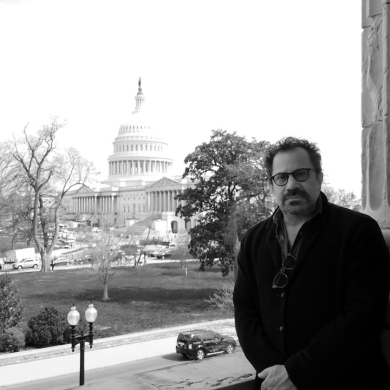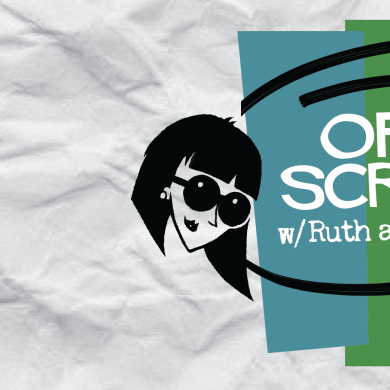By Justin Sanders
Art piracy doesn’t always make for the same big headlines as other forms of copyright infringement, but make no mistake – it is a very real problem, and the numbers are staggering.
A fervid interest in art-collecting as a financial investment has whipped up the buying and selling of fine art into a $60 billion-per-year global industry, and some sources estimate that as much as half of that total is spent on forgeries.
We live in a boom time for nefarious art world operators – and developments in technology are only giving these bad actors more sophisticated ways of pursuing their nefarious ends.
Online auctions, peer-to-peer digital sales platforms, and other unregulated sales arenas provide an endless maze of hidden corners and secret back-channels where thieves can hawk their wares to whoever is careless enough to bid.
Many forgery acts involve deceased artists, but many also target contemporary artists such as the graffiti wunderkind Banksy, or famed British painter Damien Hirst. The illicit wares themselves, whether they are duplicates of existing works or new and “original” fakeries created from scratch, are of increasingly high quality thanks to astonishing innovations in digital compositing and 3D printing.
Fortunately, as methods of forgery have evolved in modern times, so have artists’ methods of combatting them. What follows are some of the fascinating ways visual artists can go about protecting the authenticity of their masterpieces, and in so doing, help foster integrity and trust – up and down the art world supply chain.
.
FINGERPRINT IT
Once the hallmark of art legitimacy, a hand-drawn or -painted signature is no longer nearly enough to shield an original work from forgery, as even amateur art forgers can easily copy most autographs.
Fortunately, there are other, more fortifying ways for artists to leave their mark on a new work. The easiest of these methods couldn’t be more primitive, and yet there is a reason why fingerprinting is one of the most widely used systems of identification and authentication across almost every industry – generally speaking, it works.
Some artists, using ink or paint, will stamp the back of a completed painting with their fingerprint along with the date of completion. Others might press a digit or two right into the work itself, choosing a discreet area where the print might be referenced later without detracting from the art.
Of course, a fingerprint means little without the records to match it, so it’s important for the artist to include documentation that backs up their print. Fortunately, the means of creating this all-important additional verification have, like everything else, become easier and more effective thanks to technology…
.
CERTIFY IT
Art works have had certificates of authenticity attached to them for centuries, but these documents tend to be easily faked, damaged, or lost. Now, digital services such as Tagsmart have made certificates of authenticity more convenient, safe, and effective than ever before.
Tagsmart’s platform lets artists swiftly create a record for any new or old work that includes its title, credits, year of creation, buyer and seller data, and any other identifying information one might choose to include – such as a fingerprint scan.
Each certificate is also embedded with a “Despatch Stamp” and a unique “cut pattern,” that collectively make it nearly impossible for a thief to copy the document and thereby add artificial validity to a forgery exchange.
A Tagsmart certificate combined with a fingerprint is a great step forward for artists looking for enhanced copyright protection, though some folks might need to go even further to feel completely secure…
.
DNA TAG IT
A mention of “DNA” conjures images of science-fiction laboratories and cloning. But fear not – the genetic material that comprises DNA tags in the art world is synthetic, made from materials such as canvas, paper, or aluminum.
DNA tags can be stuck to the art work like a sticker, where they proceed to bond with the canvas. Tagsmart is again the leader in this burgeoning field and assigns each of its tags with a numerical code that can be inputted to pull up its online record.
Some famous artists have already taken to DNA tagging, such as Gary Hume and Marc Quinn, with many more surely coming on board as it becomes increasingly obvious that limiting fine art infringement could be as simple as slapping on a label.
.
TRAWL THE DARK WEB FOR IT
After all is said and done, even the most heavily protected art works still face a modicum of piracy risk, with many infringing transactions occurring in shadowy corners of the internet.
For artists whose existing works are susceptible to online forgery dealings, Strategic IP Information’s (SIPI) Art and Artistic Legacy Protection (AALP) platform is here to help. Designed to efficiently scour the internet for illicit activity within fine art commerce, its software digs through millions of online art listings, searching for forged items for sale, unlicensed usages (such as adaptation to posters or figurines), and other suspicious behavior. The platform can also send a cease-and-desist letter to fraudulent purveyors, and keeps a database of bad actors as it goes.
.
BE ACCOUNTABLE FOR IT
As with all forms of piracy in the creative industries, suppressing art forgery criminals in the digital age is like a game of Whack-A-Mole, with a new thief popping up for every one that gets pushed down.
The art world isn’t taking this affront to its business sitting down. The FBI alone has a dedicated Art Crime Team composed of 16 special agents who work exclusively to combat art fraud. Their efforts are bolstered by a flourishing forensic art investigation industry that is rife with firms that utilize carbon dating, X-ray fluorescence, scanning electron microscopy, and other high-tech methods of analyzing art works and determining their authenticity.
But while these measures are positive developments, they are also largely reactive, generally serving to protect the buyers and sellers of art after transactions have already occurred.
It’s time for the artists themselves to help secure their transactions as well – before they occur. Forgers undermine the reputation of the fine art industry at large, damaging the livelihood of everyone involved. Therefore, everyone involved must take responsibility for ending the threat.
Gone are the days when simply sending a new piece out into the world and hoping it never gets infringed on are enough.
Today’s art world pirates have the means to steal anything and today’s artists have the means to fight back – by applying cutting-edge protective measures to new works before they ever even leave the studio.
Image credits, from top:
Shutterstock / By studiostoks
Shutterstock / By i3alda
Shutterstock / By Stokkete
Shutterstock / By adike






